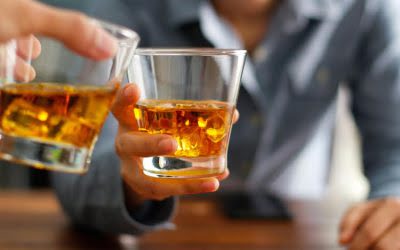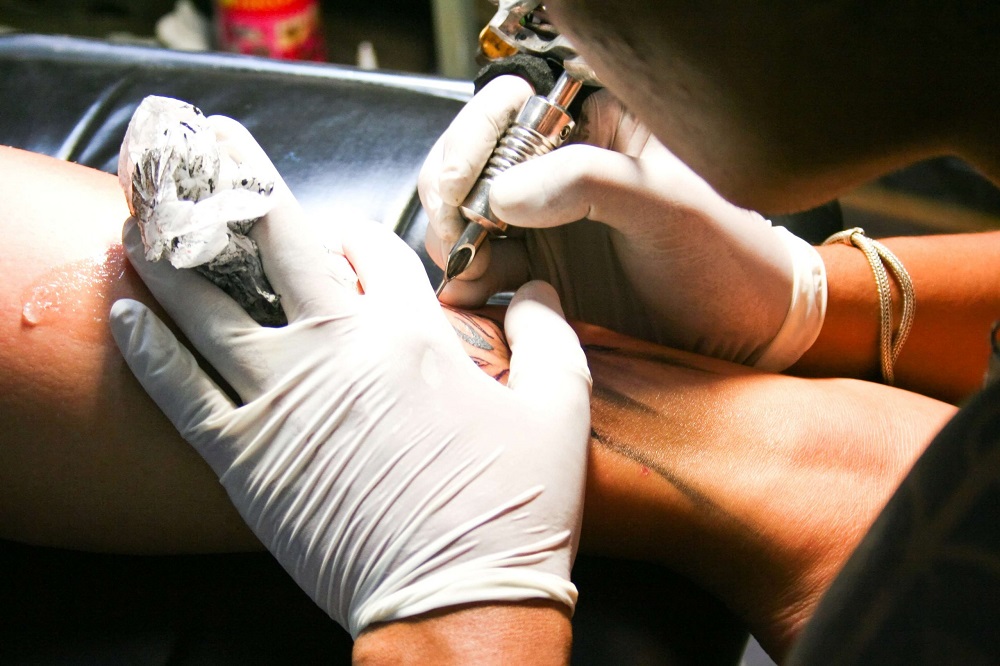Contents
Sometimes, the consequences that arise force the addict or alcoholic to stop using. However, in the absence of outside help, such as alcohol or drug detox followed by addiction treatment help, the substance abuse or addictive behavior is likely to return. Addiction alters the brain chemistry affecting the process of thought and decision-making. The definition of addiction also includes strong references to denial, minimization and justification, all of which are primitive internal defense mechanisms. After the addiction is acknowledged, the addict may ultimately be forced to decide to stop using chemicals, thus breaking the cycle of addiction. The cycle of addiction is powerful, usually requiring outside interventions that include alcohol detox or drug detox and substance abuse treatment.

If you think you may be struggling with a TV addiction, talk to your doctor about your TV watching habits, and they will work with you to figure out how best to help you. You will continue an action for a longer time signs and symptoms of alcoholism or do more than you had initially planned. Withdrawal, when you feel unwell if you stop an action, and need to continue to feel well again. Tolerance, where you need more of an action to get the same feeling.
Misuse – This is when a person experiments with drugs or alcohol recreationally, or uses those substances to ease physical or emotional pain. When they experience the temporary pleasurable effects of alcohol or drugs, they are motivated to use them again. While some of the reasons can be traced to mental disorders, others are motives that evolved out of a desire to escape a present situation. Physically, addiction causes the same chemical dependencies in the brain regardless of why drugs or alcohol were consumed in the first place. Substance abuse is the next step in the development of an addiction.
Substance Abuse and Addiction Health Center
Bridges of Hope is an accredited drug and alcohol detox and rehabilitation center with customized programs tailored to each individual patient. At Total Health Guidance, we strive to help the whole person in all areas of his or her life, including physical, emotional, relational, spiritual, and financial. Identifying and developing effective ways of coping with stress are crucial during the action stage. This will allow you to effectively move on to the maintenance stage without experiencing the relapse stage. With substance addictions, thorough and thought-out preparation can be important to success. The preparation stage of the stages of change model means a person has moved forward to planning and preparing for carrying out changes they learned about in the contemplation stage.
Substance-induced anxiety disorders, characterized by feelings of nervousness, restlessness, or panic caused either by using a drug or stopping drug use. The DSM 5 acknowledges that people are different, and not all are automatically best books on addiction to break down stigma and open your mind predisposed to addiction or equally vulnerable to developing SUDs. Furthermore, some people have far lower levels of self-control that predispose them to develop problems if they’re exposed to addictive drugs.
- Furthermore, some people have far lower levels of self-control that predispose them to develop problems if they’re exposed to addictive drugs.
- The altered brain chemistry essentially requires constant, repetitive exposure to the substance or action to function psychologically and physiologically.
- These changes can compromise brain function and drive the transition from controlled, occasional use to chronic misuse, which can be difficult to control.
- It takes time to get used to life without an addiction, even if your support and alternative ways of coping are good.
- Through dual diagnosis treatment, which is for patients with co-occurring disorders.
Later stages may benefit from inpatient addiction treatment in a controlled setting. Different substances and behaviors have different effects on a person’s health. Serious complications can cause health concerns or social situations to result in the end of a life.
Third Stage of Addiction
Most of the actions your brain is responsible for are things you don’t even think about. When drugs are introduced to the human brain, the effects are profound and dramatic. This means that you have the risk of losing many of the basic functions it’s responsible for. When the brain isn’t able to communicate within the different parts, behaviors typically change.
The altered brain chemistry essentially requires constant, repetitive exposure to the substance or action to function psychologically and physiologically. This chemical dependence leads to tolerance and withdrawal symptoms, two of the hallmarks of substance abuse addiction that most often require a professionally monitored alcohol and drug detox. Once the individual has reached this phase of the cycle, the brain has made significant changes in response to the substance. It is at this point of the addiction cycle that the brain has made a physiological change, usually involving a decrease in brain chemical production or a loss of brain chemical receptors. Over time, this physiological change leads to the next phase – dependence and addiction. Genetic and environmental factors interact with critical developmental stages in a person’s life to affect addiction risk.
They will continue to use their drug of choice regardless of the consequences. Addicts typically experience changes in their brain that can be long-lasting, and even permanent in some cases. One of the three stages of addiction is the binge/intoxication stage.

This impact results in different ways of thinking, feeling and behaving. This is exactly why drug addicts take risks, make poor decisions, and behave the way they do. To alleviate emotional or physical pain, a person might experiment with drugs or alcohol.
The Precontemplation Stage
Addictive substances and behaviors can create a pleasurable “high” that’s physical and psychological. You’ll typically use more of certain substances or engage in behaviors longer to achieve the same high again. Drug addiction is a chronic disease characterized by drug seeking and use that is compulsive, or difficult to control, despite harmful consequences. The genes that people are born with account for about half of a person’s risk for addiction. Gender, ethnicity, and the presence of other mental disorders may also influence risk for drug use and addiction.
Because it is a chronic disease, it requires ongoing treatment in order to help people remain in recovery. In this way, it is very similar to other types of diseases, such as asthma, diabetes and heart disease. This term refers to the presence of a mental health issue alongside any type of addiction. About 50% of people with substance abuse problems also have co-occurring disorders. They should be treated simultaneously during rehab, and when this is done correctly, the chances of relapsing are much lower.
It is also essential that people have a clear understanding that addiction is a chronic condition. Those living with it must learn to manage it just as someone living with any other chronic disease such as asthma or diabetes must determine the best treatment to manage those conditions. Relapse simply means that the current treatment needs to be adjusted. During the second stage of addiction, the person isn’t using drugs or alcohol to feel good. Instead, they are using the substance to avoid feeling low, a feeling that was created by their chronic substance misuse.
The Seven Steps of the Cycle of Addiction
Relapse is not failure, but rather an indication that your treatment plan is no longer working and needs to be re-adjusted. This next phase comes when casual, controlled using continues and the person begins to use effective treatments for alcohol use disorders their chosen substance on a regular and harmful basis. Possible reasons for continued use may include a long prescription for painkillers after an injury or becoming closer with friends who like to party regularly.
The Most Common Relapse Triggers
Factors such as peer pressure, physical and sexual abuse, early exposure to drugs, stress, and parental guidance can greatly affect a person’s likelihood of drug use and addiction. Most drugs affect the brain’s “reward circuit,” causing euphoria as well as flooding it with the chemical messenger dopamine. A properly functioning reward system motivates a person to repeat behaviors needed to thrive, such as eating and spending time with loved ones.
Substance-induced psychotic disorder, characterized by hallucinations and/or delusions due to the direct effects of a substance or withdrawal from a substance in the absence of delirium. Opioids are safest when used for three or fewer days to manage acute pain, such as pain that follows surgery or a bone fracture. If you need opioids for acute pain, work with your doctor to take the lowest dose possible, for the shortest time needed, exactly as prescribed. But with good preparation, it can also be an exciting time that gives way to new options. Film released by Action on Addiction to encourage young people with addicted parents to seek support.
The Cycle of Addiction and Relapse: And How To Stop It
These changes can compromise brain function and drive the transition from controlled, occasional use to chronic misuse, which can be difficult to control. The changes can endure long after a person stops consuming alcohol, and can contribute to relapse in drinking. If you’re living with chronic pain, opioids are not likely to be a safe and effective long-term treatment option.
With these practices, those suffering from addiction can become more self-aware and will be better able to recognize emotional triggers before they ignite the addiction cycle. Ritual behaviors can be described as activities, thoughts or ideas that addicts engage in as part of their addiction. Once ritual behavior has started it is hard for most addicts to turn away. In a sense, ritual behavior can be seen as preparation leading to using or acting out.
At the withdrawal stage of the cycle of addiction, a person can expect to face symptoms such as fatigue, anxiety, irritability, nausea, tremors, or even seizures in some cases. Ultimately, the withdrawal symptoms will vary depending on the particular drug of choice, the severity of the addiction, and the individual. At this stage of the cycle of addiction, the individual continues to use the substance for various reasons. They could be continuing to take a prescription drug for pain modification or they could be binge drinking in a social situation. Often, the use of the substance “ramps up” – becoming more frequent, or more intense -using the substances in higher doses, in an attempt to mask unfavorable feelings and symptoms. Environment and culture also play a role in how a person responds to a substance or behavior.






Add Comment